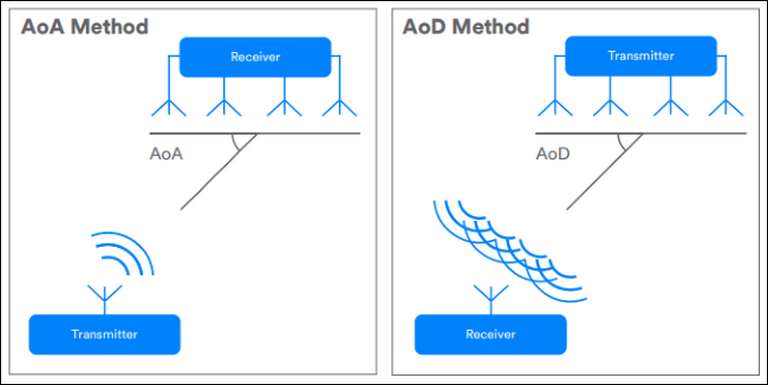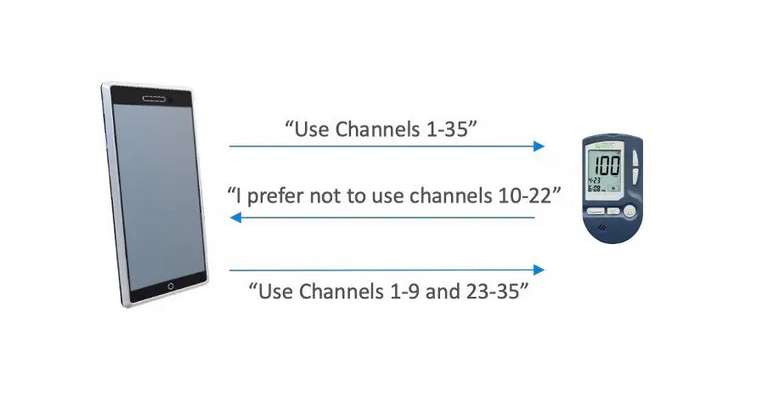Bluetooth 5.1, 5.2 And 5.3: Features And Differences Between Versions
Bluetooth is a wireless connectivity technology that is present in many devices: mobile phones, laptops, TVs, headphones and so on. As it is in constant evolution, new versions of the technology are released over time. In this text, you will get to know three of them: Bluetooth 5.1, Bluetooth 5.2 and Bluetooth 5.3.
It’s important for you to know right away that all of them are essentially versions that add features or improve on Bluetooth 5’s features. Also, these versions are backwards compatible. This means that, with very few exceptions, a Bluetooth 5.2 device will work correctly with another Bluetooth 5.1-based device, for example.

Bluetooth 5.1
Introduced in early 2019 by the Bluetooth SIG (the group responsible for defining the technology), Bluetooth 5.1 can be understood as a version of Bluetooth 5 that enhances location aspects: a device with this technology can not only identify a nearby compatible device but point its direction.
Today, via Bluetooth, a device is able to point if another device is close or far away, but Bluetooth 5.1’s parameters enable this pointing to be practically exact, with precision to the nearest centimetre. This is done using two methods called AoA and AoD:
- AoA (Angle of Arrival): in this method, the device to be located broadcasts a signal using a single antenna; the locating device detects the difference in phase of the signal as it passes by each of its several antennas to determine the direction of the former;
- AoD (Angle of Departure): here, the device to be located emits signals using several antennas; the locating device receives these signals with a single antenna and determines the location of the former by analysing the differences in the data obtained from each signal.
Thanks to this, the technology can be used so that the user can find his headphones using the mobile phone or locate himself inside a museum. And these are just a few simple examples. The possible applications for Bluetooth 5.1 are varied.
This version also allows the connection between devices to be initiated more quickly and with less energy expenditure. In addition, Bluetooth 5.1 improves advertising, i.e. the way in which the device sends a signal that it is available for connection. This increase may contribute to faster or more stable connections.
Bluetooth 5.2 + LEPC + LE Audio
At the end of 2019, the Bluetooth SIG published the specifications for Bluetooth 5.2, a version that has, among its purposes, the intention of improving the connectivity experience of compatible equipment, mainly headphones and portable speakers.
For such, Bluetooth 5.2 brings EATT (Enhanced Attribute Protocol), an improved version of ATT (Attribute Protocol), a protocol that defines how specific data from a device (attributes) should be transferred, read and recorded in another device.
ATT is optimised to work with devices that have low power consumption, which is why this protocol has been included in the Bluetooth Low Energy (BLE) specifications list.
Compared to ATT, EATT improves the experience by allowing multiple transmissions at the same time (whereas ATT allows only one at a time) and L2CAP (Logical Link Control and Adaptation Protocol) packet interchange. With this, the latency of the connections (the time it takes for them to be established and for the exchange of information to take place) decreases and the transmission signal becomes more stable.
Another important new feature of Bluetooth 5.2 is LE Power Control (LEPC), a specification that optimises power consumption by allowing two devices connected to each other to dynamically adjust transmission power.
But LE Audio is probably the most eye-catching feature of Bluetooth 5.2. This is a feature that not only improves the audio quality of devices like wireless headphones but also optimises the connection’s power consumption to save the device’s battery.
In part, this is an effect of the adoption of LC3 (Low Complexity Communications), a codec that compresses the transmission, but without impairing audio quality.
Audio Sharing and Multi-Stream Audio are also noteworthy features. The former makes it easy to share audio via Bluetooth. This can be via personal sharing, when a person shares the music from his smartphone with a friend, for example, or via location, an option that enables sharing from a physical point, such as the departure lounge of an airport.
Multi-Stream Audio allows sound to be transmitted in more than one stream at the same time, synchronously. This is useful for TWS (True Wireless Stereo) headphones: normally, this type of device receives the signal on one side and relays it to the other; with Multi-Stream Audio, both headphones receive the signal simultaneously from the source (which can be a mobile phone or other devices).

Bluetooth 5.3
The Bluetooth 5.3 specifications were presented by the Bluetooth SIG in July 2021 and aim, among other objectives, to make the technology more suitable for applications based on the Internet of Things, such as smart speakers or smart light bulbs, as well as wearable devices (wearables), such as smartwatches or bracelets.
To this end, Bluetooth 5.3 features a connection subclassing mode that allows a device to move from a high to low-performance state – and vice versa – more quickly, contributing to energy savings.
This is useful, for example, for a smartwatch that transmits data to a smartphone: once that data has been sent, the device can return more quickly to a reduced working mode to save battery life.
The new version also introduces a channel classification enhancement. To reduce the risk of interference, the Bluetooth frequency band is divided into several channels. Those that are congested or too noisy are rated as “bad” to be avoided during communication.
In previous versions of the technology, this channel classification is established only by the main device in the communication. In Bluetooth 5.3, both the primary device and the peripheral device (the one with which the primary communicates) participate in the channel classification process. Thus, the accuracy of the channels to be avoided increases, making the connection more stable.
Another new feature of Bluetooth 5.3 that contributes to energy savings and, in addition, can improve connection efficiency, is the introduction of the AdvDataInfo (ADI) parameter in advertising packets (recall, the way the device transmits a signal to let you know it is available for connection).
With ADI, duplicate advertising packets are identified and thereby discarded quickly. Discarding redundant packets saves processing capacity in order to reduce power consumption and improve connection efficiency.
Finally, Bluetooth 5.3 enhances connection security by enabling improved control over the length of encryption keys.